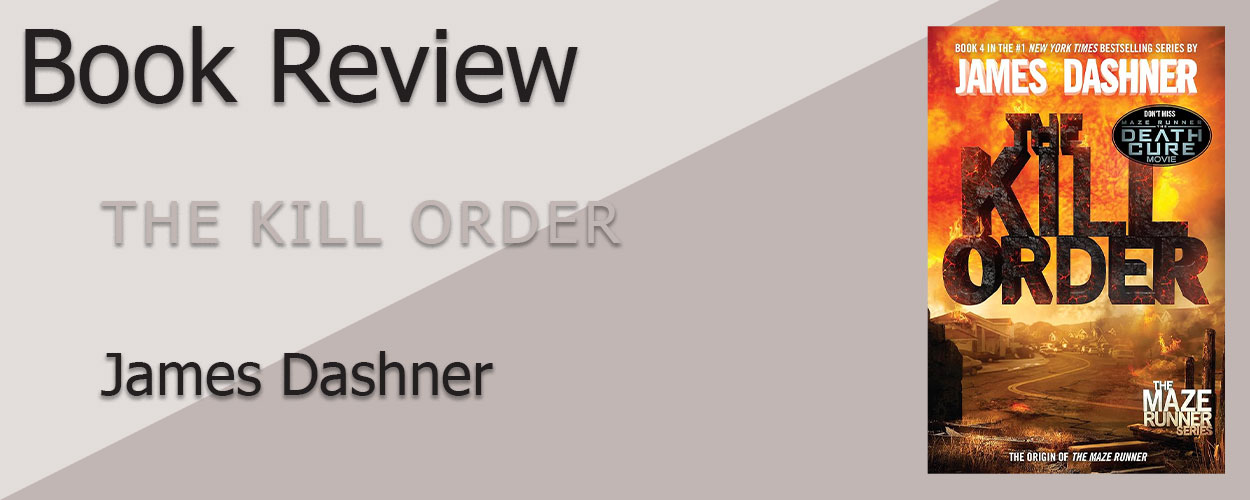

I really liked it
A prequel to the Maze Runner series! The next book also seems to be a prequel—does that mean that The Death Cure ending was all there was? That’s just a bit disappointing…
Read: Sep 19 – Sep 25, 2024
Genre: Science Fiction, Dystopia, Post-Apocalypse
Audience: Young Adult
Book contains: illness, virus, madness, disease, violence, death, murder
Purchase a copy from Amazon.ca
Thirteen years before the Maze Runner trials for the Gladers, solar flares ravaged the earth, wiping out millions of people. Mark and Trina, alongside Alec, Lana, and some others, have survived and grouped together, but their lives aren’t in the clear. One day, a Berg drops from the sky, and suited strangers rain down darts—darts containing a deadly virus. Mark and Alec are determined to investigate and find out why.
Was the original story just a trilogy? It almost didn’t feel that way when I finished The Death Cure, but I guess that was the end. I kind of liked Mark as a main character more than Thomas, though. This was also a much more interesting storyline, in my opinion.
Like the original trilogy, this book was written in third person limited past tense, focusing on Mark as the main character. Something interesting that happened was that the text slipped into present tense for all the flashbacks. I found this particularly clever because it gave a better sense of immediacy to Marks’ flashbacks, and it was ironic that the flashbacks were in present tense while the ongoing narrative was in the past.
I read along to this book while listening to a full video on Youtube. It was a little annoying at first, since I thought the beginning was missing so I just started reading on my own, but once I reached chapter 10, I realized that the chapter order was all switched around. Luckily a pinned comment includes the time stamps for each of the chapters.
Mark is about sixteen or seventeen years old for the duration of the novel, and as main characters go, he was pretty good. He starts with a strong sense of morals, a great respect for Alec (a veteran soldier), and a deep love for Trina (his girlfriend). I especially loved how each of the characters evolved over time as the world got worse and worse around them; disaster really strips people down to their base instincts. It was also a pretty small cast of characters, so I didn’t get lost in having to know who everybody was.
Mark’s pseudo father-son relationship with Alec was one of the strongest things about this book. While his relationship with Trina was sweet, it was in the periphery; Mark and Alec really shine here as the main duo. Mark often refers to Alec as an “old bear”, but it’s clear in his tone and how he’s always learning from and listening to him that he respects him greatly. His own family was taken from him by the sun flares, and this new family he’s carved out for himself is something of great importance, which makes it so much sadder that the government intends to take everything away with the virus (revealed at the end of The Death Cure that the flare virus was manmade and purposefully released).
I both loved and hated the imagery in this book. It was incredibly easy to picture the scenes—almost cinematic in nature. This was great for the scenes of beautiful imagery, and awesome for action and disaster, but the descriptions of humans infected by the flare was horrid. It’s definitely not for a reader with a sensitive stomach. The writing was good for its YA audience, but I will put out a warning for readers not used to violence or have an aversion to reading about highly contagious illnesses.
I found that the pacing in this book was better than most of the others in the series. It started strong, and bad things kept happening and getting worse; something new was always happening. The characters are on a journey, but it never felt like we spent a lot of time on the traveling portion of it, which was a relief. This book also dipped into the suspense and horror genre a little at times, always keeping a sense of tension within its pages.
I found myself enjoying this prequel book even more than I enjoyed the original trilogy. Could it be because I had no prior expectations for this book? I’m not sure. Nonetheless, I highly recommend this book to readers if they like post-apocalyptic worlds. It toed the line of “zombie apocalypse” while also addressing issues that we are currently facing (despite having been released in 2012!).
The Maze Runner Book 1: The Maze Runner by James Dashner
The Maze Runner Book 2: The Scorch Trials by James Dashner
The Maze Runner Book 3: The Death Cure by James Dashner
The Maze Runner Prequel 1: The Kill Order by James Dashner
The Maze Runner Prequel 2: The Fever Code by James Dashner
The Hunger Games Book 1: The Hunger Games by Suzanne Collins
Divergent Book 1: Divergent by Veronica Roth
Tigerpetal Press is a small book press dedicated to publishing local authors and poets.